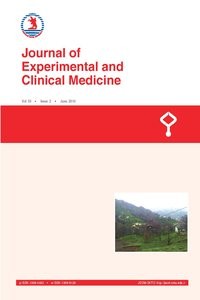Abstract
Cervical polyps are defined as focal hyperplastic protrusions of endocervical folds with an incidence of 1%-10%. The majority of endocervical polyps are benign and the incidence of high-grade squamous intraepithelial lesion (HSIL) or carcinoma is relatively rare (1: 1000). Endocervical polyps are mostly incidentally discovered, however the most frequent symptoms are post-coital, postmenopausal or intermenstrual bleeding and/or profuse discharge. Here, we present a perimenopausal women with an asymptomatic polyp, later to be diagnosed with cervical carcinoma. A 46-year-old woman applied to our outpatient clinic without any complaint. The examination revealed a 2.3x2 cm cervical polyp with a slim pedincule. An immediate cervical polypectomy was performed and histopathological examination was resulted as HSIL. The patient then underwent cold-knife conization and endocervical curettage (ECC). The excized cone material’s histopathology was consistent with the polyp and the cervical lesion was continous at the surgical borders. ECC was positive for cervical intraepithelial changes. A type 1 hysterectomy was carried out. The definitive pathological diagnosis was microinvasive squamous carcinoma. Accummulating literature advises against routine polypectomy, despite the possibility of displasia in cervical polyps. Various clinical aspects, such as symptoms, age, menopausal status, cytological and colposcopic findings have been evaluated in conjunction with this common entity. In conclusion, the gen- eral notion that symptomatic polyps over 5 mm should be evaluated may be cost-effective, but will not discern cases of polyp associated operable microin-vasive /invasive cervical carcinomas.
Details
| Journal Section | Surgery Medical Sciences |
|---|---|
| Authors | |
| Publication Date | June 16, 2016 |
| Submission Date | January 1, 2015 |
| Published in Issue | Year 2016 Volume: 33 Issue: 2 |
Cite

This work is licensed under a Creative Commons Attribution-NonCommercial 4.0 International License.


